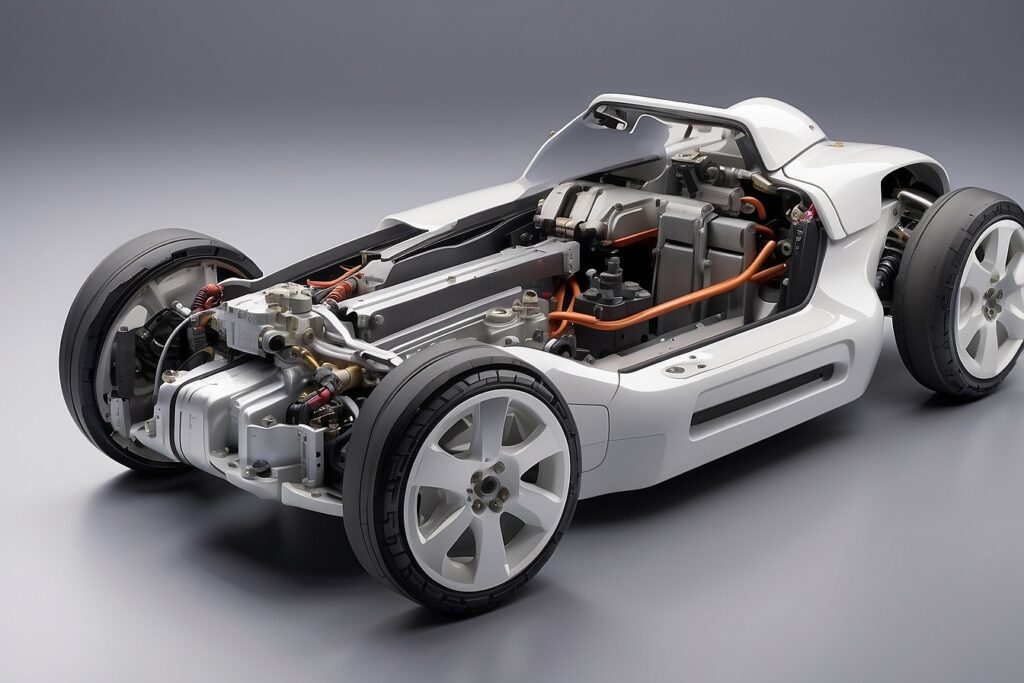Introduction: The automotive industry is undergoing a transformative shift towards electric and autonomous vehicles, necessitating advancements in every aspect of vehicle design and engineering. Electric actuators, with their precision and efficiency, play a crucial role in enhancing various automotive functions. In this blog, we’ll explore the design and engineering considerations involved in seamlessly integrating electric actuator into automobiles, paving the way for a new era of automotive innovation.

- Application-specific Integration: Electric actuators find applications in diverse automotive systems, including throttle control, brake systems, steering mechanisms, and automated doors. Tailoring the integration to the specific application is paramount. Each system demands unique performance specifications, such as speed, torque, and precision, requiring a meticulous approach to design.
- Space Optimization: Modern vehicles are designed with compact spaces, making efficient use of every inch crucial. Electric actuators, being more compact and lightweight than their hydraulic counterparts, offer an advantage in space optimization. Engineers must carefully integrate actuators without compromising interior space, considering factors like mounting options and form factor.
- Power Efficiency: Electric vehicles, in particular, emphasize energy efficiency. When integrating electric actuators, engineers need to consider power consumption and efficiency. Optimizing power usage not only extends the vehicle’s range but also contributes to overall sustainability. This involves selecting actuators with the right power requirements and implementing energy recovery systems where possible.
- Environmental Considerations: Automobiles operate in diverse environmental conditions, from extreme temperatures to exposure to moisture and contaminants. Electric actuators must be designed to withstand these challenges. Employing materials and coatings that resist corrosion, as well as ensuring proper sealing against dust and water ingress, are essential aspects of robust engineering.
- Integration with Vehicle Control Systems: Electric actuators are an integral part of the broader vehicle control system. Seamless integration requires compatibility with the vehicle’s electronic control unit (ECU) and communication protocols. Engineers must ensure that the actuators can communicate effectively with the vehicle’s central control system, allowing for precise and coordinated operation.
- Safety and Redundancy: Safety is a paramount concern in automotive design. Electric actuators must adhere to stringent safety standards. Implementing redundancy systems ensures that critical functions remain operational even in the event of a component failure. This involves designing fail-safes and incorporating redundant sensors and actuators where necessary.
- Testing and Validation: Rigorous testing and validation are imperative to guarantee the reliability and performance of integrated electric actuators. This includes simulations, real-world testing, and compliance with industry standards. Thorough validation processes help identify and address potential issues before they reach the production stage.
- User Experience and HMI Integration: As vehicles become more sophisticated, the user experience becomes a key consideration. Integrating electric actuators seamlessly involves not only technical aspects but also ensuring a smooth and intuitive user interface. Human-Machine Interface (HMI) design must complement the functionality of integrated actuators, providing a user-friendly experience.
Conclusion: The integration of electric actuators in automobiles represents a pivotal step in the evolution of the automotive industry. Engineers and designers must navigate a complex landscape of considerations, from application-specific requirements to power efficiency, environmental resilience, and safety. By addressing these design and engineering challenges with precision and innovation, the automotive industry can unlock the full potential of electric actuators, driving us toward a future of smarter, more efficient, and environmentally conscious vehicles.

